By Dan Weisz
There are still owls “out there” and owl photos to see, but I’m sharing some other desert photos with you now just for a change of scenery. All of the birds and animals below can be seen in the Foothills. Keep your eyes open and you just may run into one or another!
Ladder-backed Woodpeckers are small, black and white woodpeckers of the southwest United States and Mexico. A ladder of stripes runs all the way up their back. The female here has a buffy patch in front of her eye and does not have the red crown that the males have. Here she is feeding some delicious insects to her young at Sweetwater Wetlands.
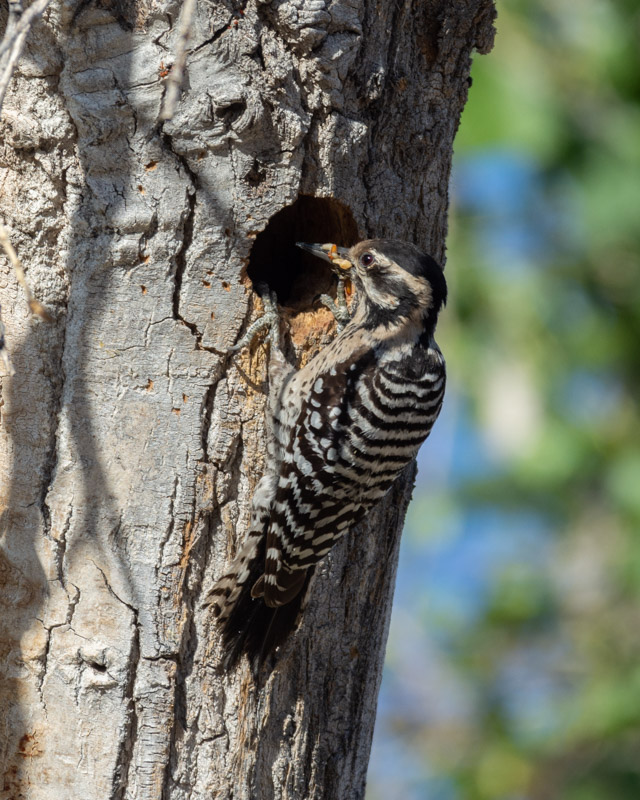
And like typical kids everywhere, the little one is curious about its world and awaits more handouts by mom.
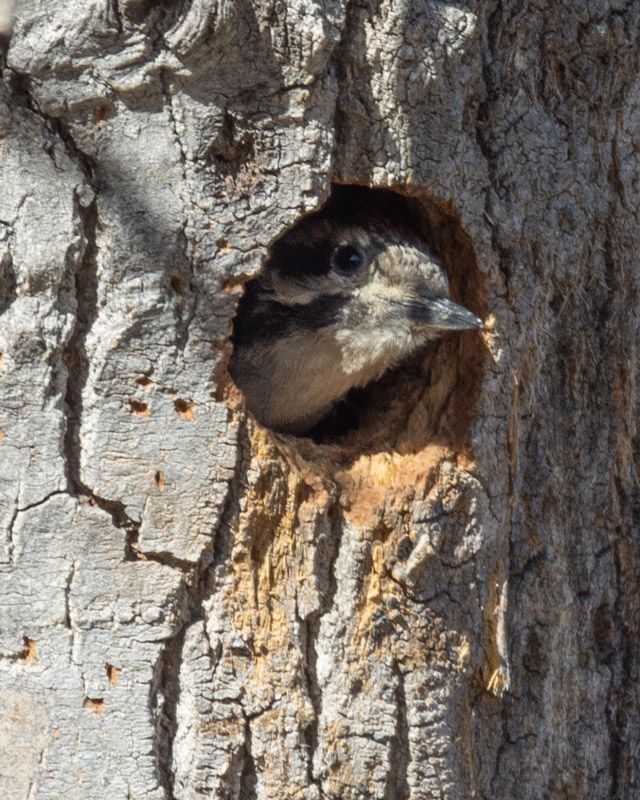
It should read: At Agua Caliente Regional Park,a Broad-billed Hummingbird feeds her young. The babies are pretty helpless and still blind and they depend on the meal Mom provides by regurgitating a slurry of nectar and partially digested insects deep down their throats. Sounds yummy! Hummingbirds always lay two eggs in their nests.
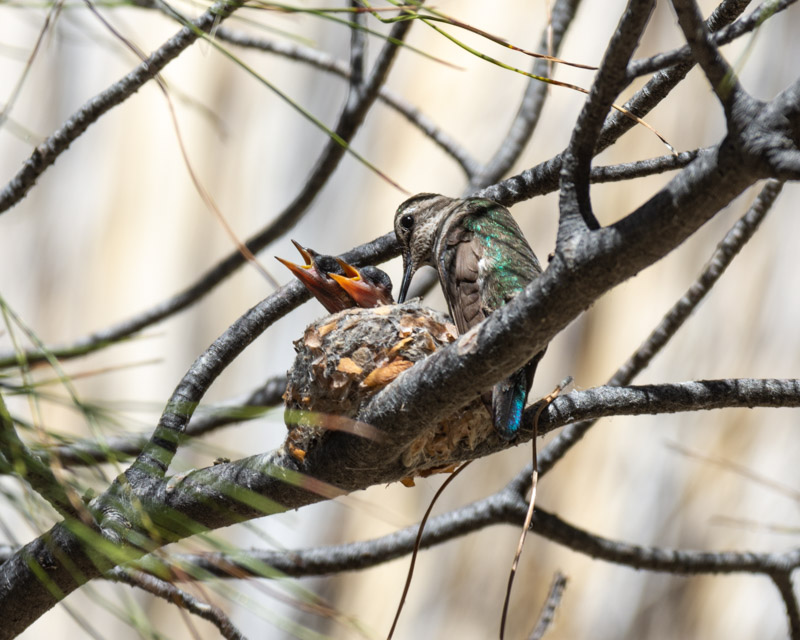
Hooded Orioles are the most common orioles seen in Tucson each summer. They build nests from the fibers of palm fronds and sew it to the underside of the leaves. You can see a tail sticking out of this nest at Agua Caliente Park.
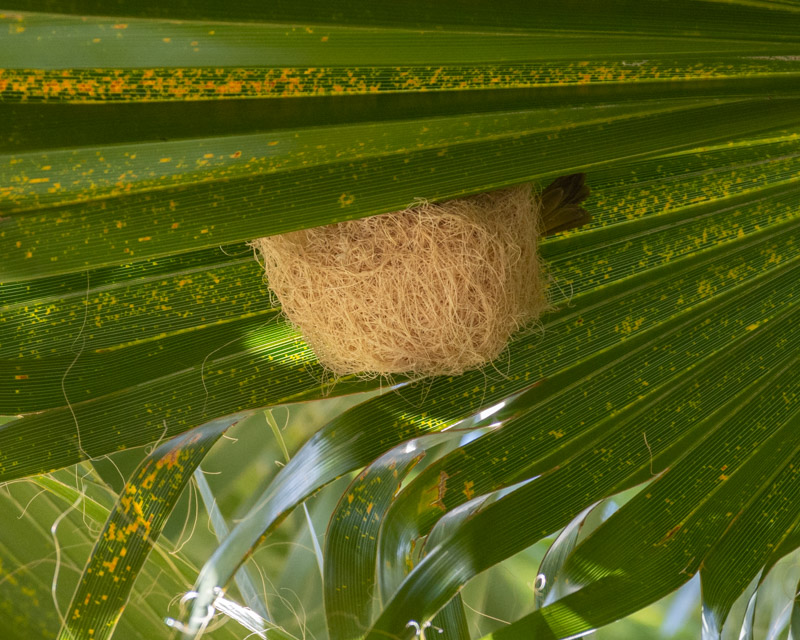
Male Vermilion Flycatchers are one of the most striking birds we have in Tucson. They spend about 90% of their time perched, and can often be seen near any open field in the Tucson area.
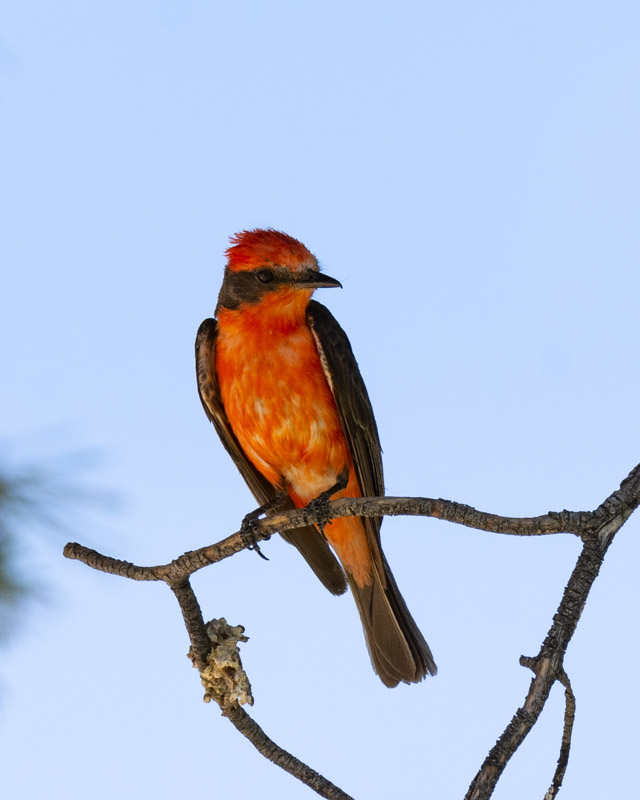
At Agua Caliente, a Pocket Gopher was busy trying to build an entrance to his burrow from underneath a walking path. Probably not a great idea! Pocket Gophers spend almost their entire life underground digging and digging and digging. Gophers’ teeth are continuously growing and are used, along with the gopher’s claws, to help dig the tunnels. The teeth grow more than nine inches per year. A gopher’s lips close behind its teeth so that dirt doesn’t get in its mouth while it digs, so the teeth are always visible.
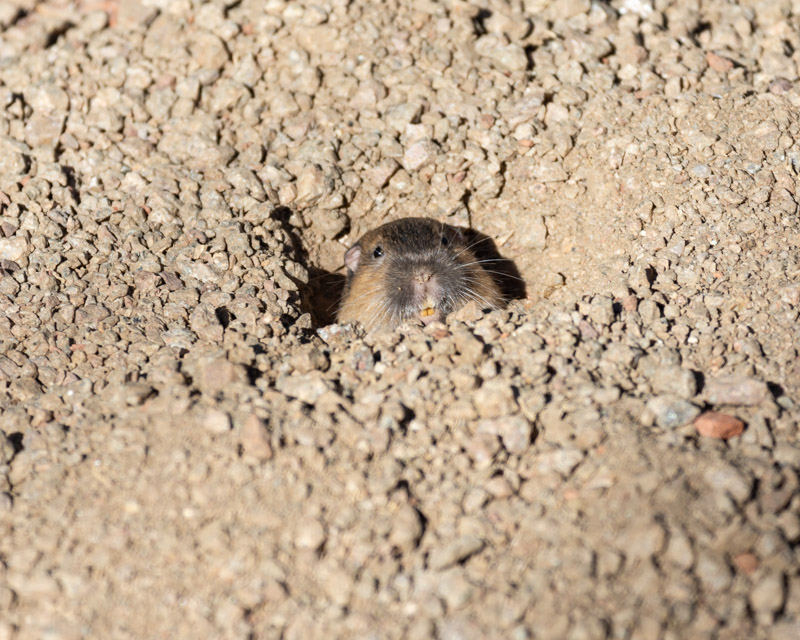
This wildcat lives at the Desert Museum and is representative of the many bobcats in the Tucson area (including the one that rested in the shade by my front door yesterday). Here it displays a large male Desert Spiny Lizard that wandered into its enclosure.
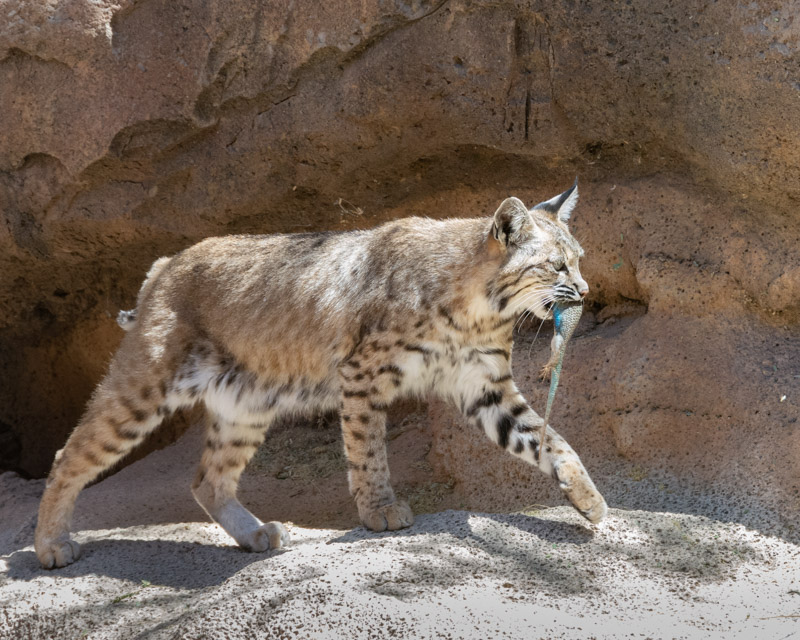
Costa’s Hummingbird here with its long purple gorget.
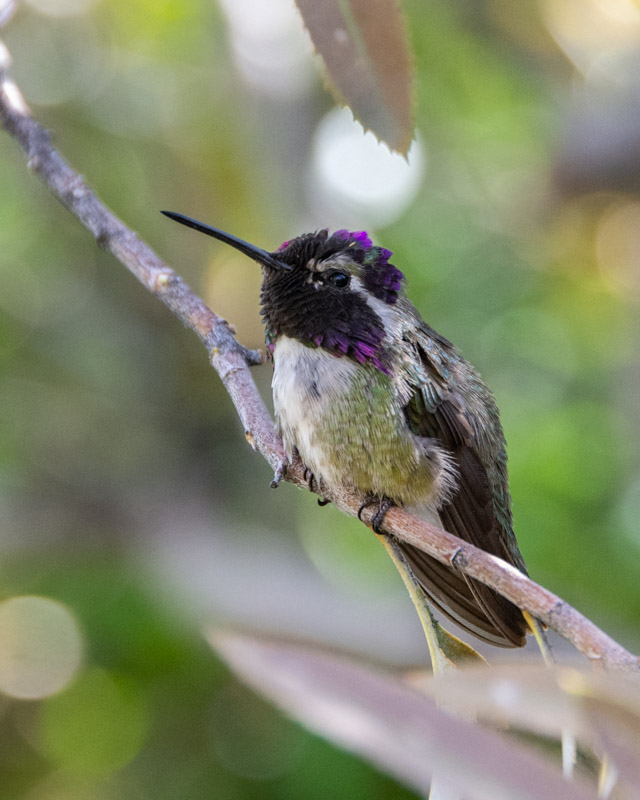
A small (perhaps a juvenile) Rock Squirrel enjoys a mesquite bean at the Desert Museum. Although the rock squirrel looks like a tree-dwelling squirrel, it is a ground dweller. That’s not surprising as we lack a lot of trees in the Sonoran Desert.
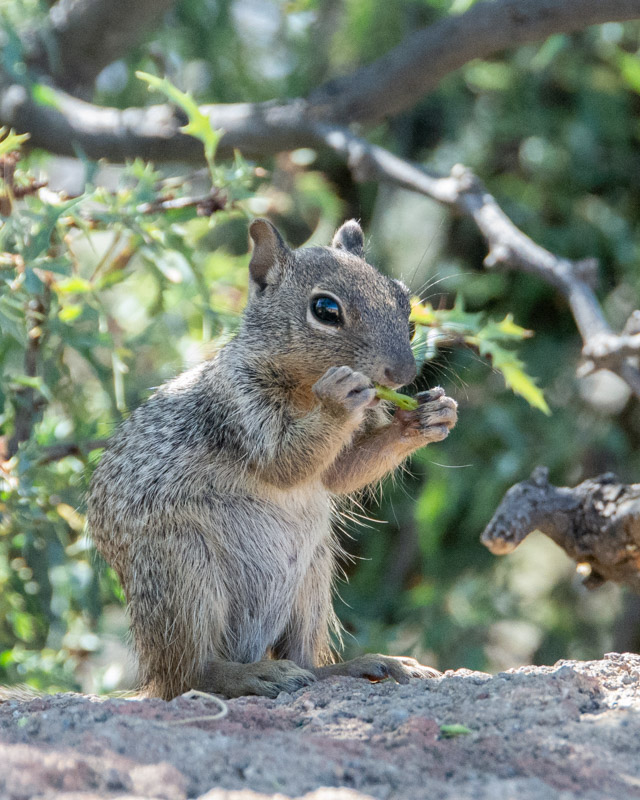
It’s summer in the desert and rattlesnakes have been out for a while. At Sweetwater Wetlands, we came across a Diamondback Rattlesnake (several people ID’ed this one for me). It walked across the path and then came to rest at the mouth of a squirrel burrow.
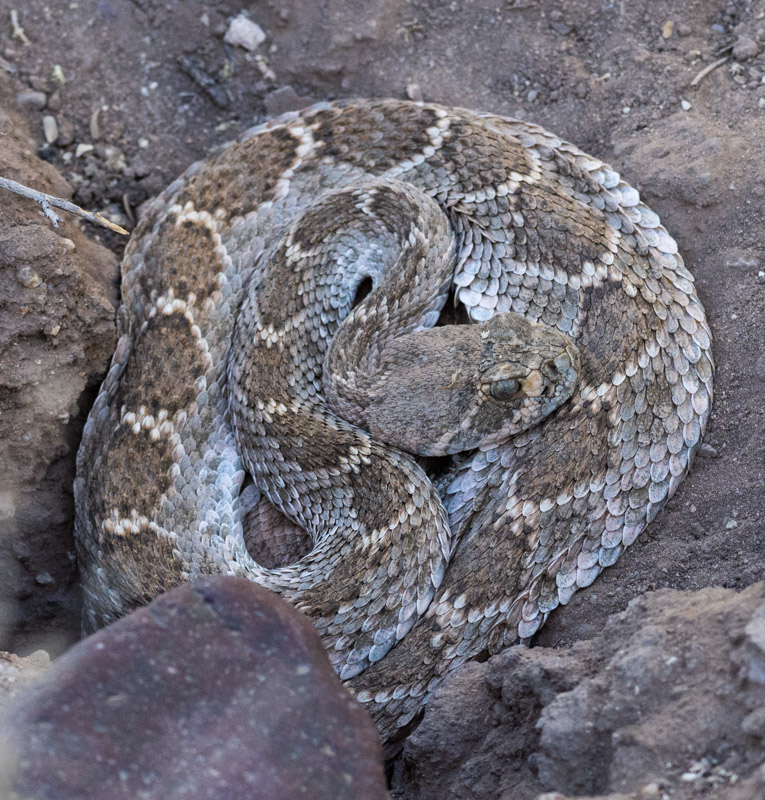
You cannot tell the age of a rattlesnake by counting its rattles. Snakes gain a rattle each time they shed their skin. This may occur several times during the year or, for an older snake, less than once per year. And the rattles can break off. Still, a big rattle is impressive.
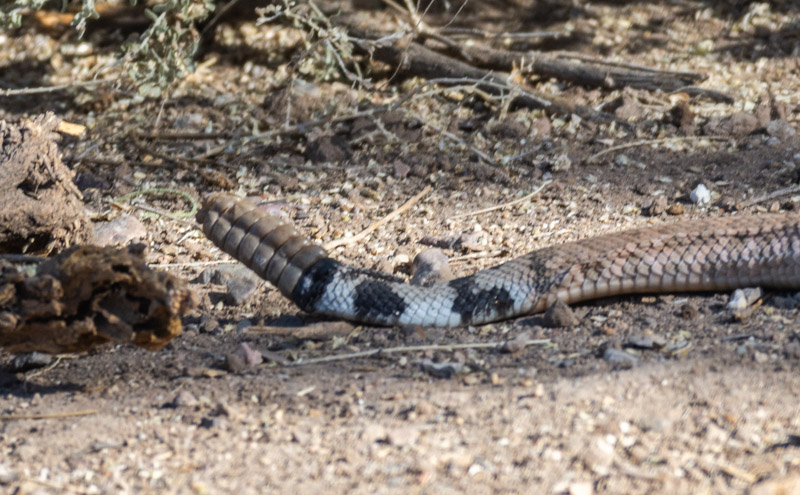
Finally, this Desert Spiny was running around at Agua Caliente, chasing other males away from his territory. His breeding colors were on full display.
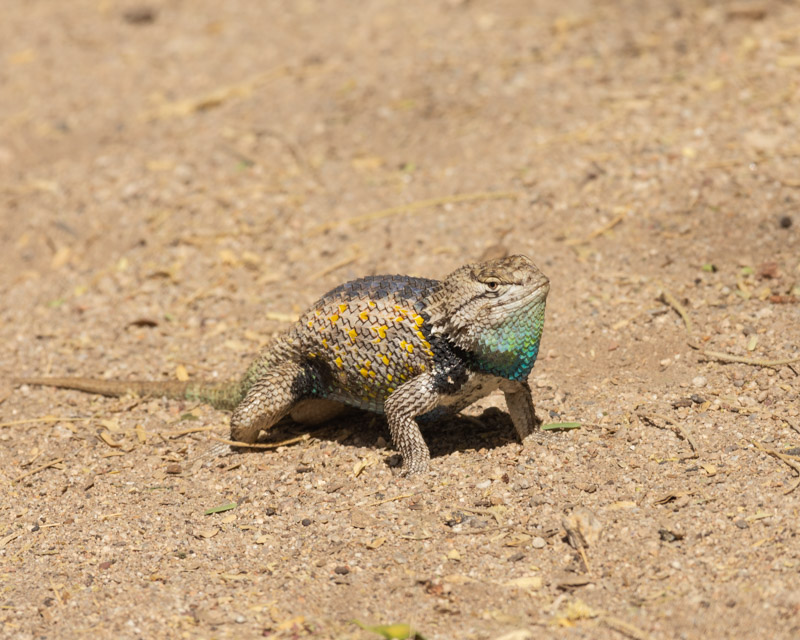
Next, we’ll catch up with the nesting Western Screech Owls in my yard.
FYI: I now have photos available for purchase on an Etsy site- if you do not see one of your favorites there, just ask! Thanks.
https://www.etsy.com/shop/birdsofthedesert
or see them at
https://www.instagram.com/birdsofthedesert/
My other pictures are available for viewing at https://www.flickr.com/photos/122902197@N03/albums
Return to Foothills Clusters Home
